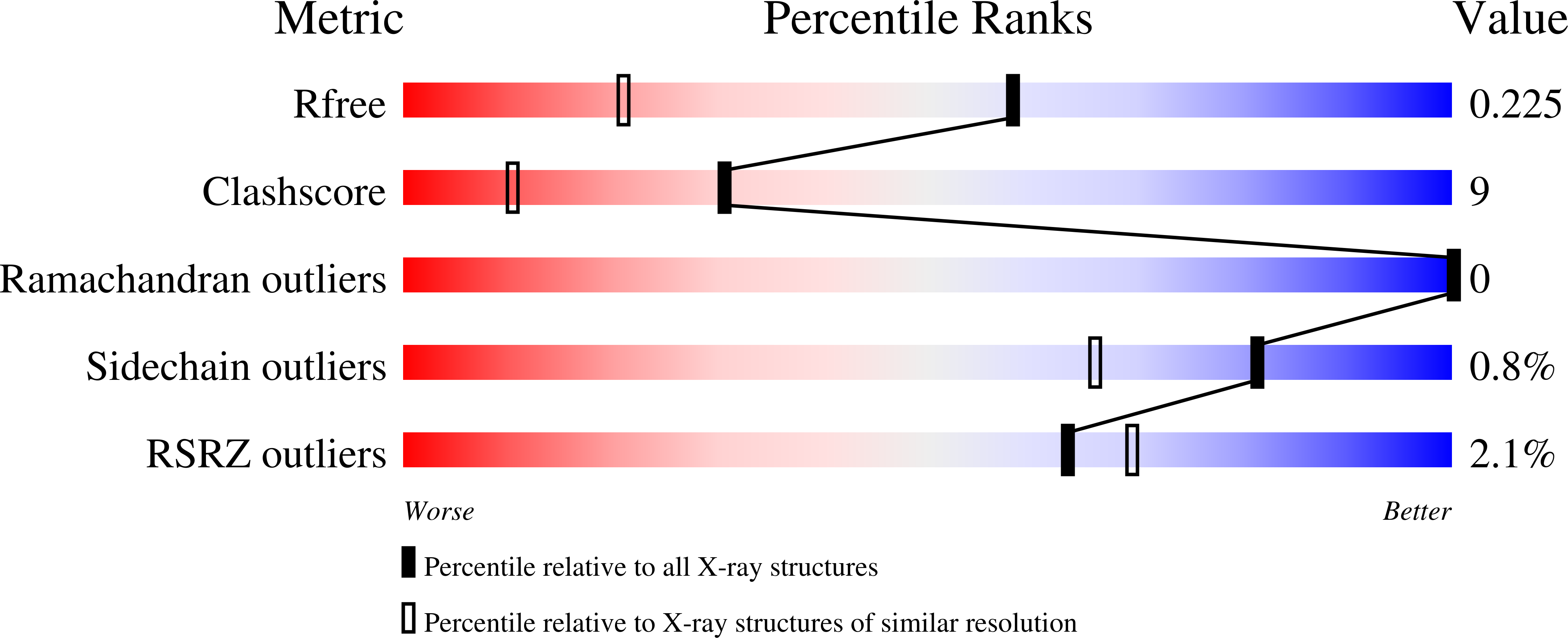Metal sites in 3,4-dihydroxy-2-butanone 4-phosphate synthase from Methanococcus jannaschii in complex with the substrate ribulose 5-phosphate.
Steinbacher, S., Schiffmann, S., Bacher, A., Fischer, M.(2004) Acta Crystallogr D Biol Crystallogr 60: 1338-1340
- PubMed: 15213409
- DOI: https://doi.org/10.1107/S0907444904009862
- Primary Citation of Related Structures:
1SNN - PubMed Abstract:
The crystal structure of Methanococcus jannaschii 3,4-dihydroxy-2-butanone 4-phosphate synthase in complex with the substrate ribulose 5-phosphate at a dimetal centre has recently been determined at 1.7 A resolution. The enzyme converts ribulose 5-phosphate into 3,4-dihydroxy-2-butanone 4-phosphate, while its C4 atom is released as formate. The resulting four-carbon body supplies all eight C atoms for the xylene moiety of riboflavin. Three of the four hydroxyl groups of ribulose 5-phosphate were coordinated by the metal ions. Based on crystallographic refinement, the metals were assigned as zinc and calcium, which were present in the crystallization buffer. Neither metal supports the enzymatic reaction. In the present study, the correctness of this assignment is assessed using anomalous diffraction data collected at the high-energy side of the zinc absorption edge (lambda = 1.2823 A). Only the three tentative zinc ions give strong peaks in an anomalous difference Fourier map (>20sigma), whereas the four tentative calcium ions do not show anomalous signals above the noise level. These results confirm the initial assignment. In addition, the resolution was improved to 1.55 A.
Organizational Affiliation:
Max-Planck-Institut für Biochemie, Abteilung für Strukturforschung, Am Klopferspitz 18a, D-82152 Martinsried, Germany. steinbac@caltech.edu

















